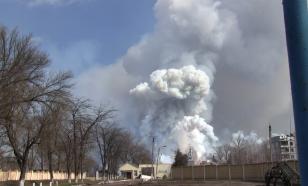Demand for meat turns disease
The practice that mean animals are too highly concentrated in confined spaces can lead to more often cases of transferring diseases from animals to humans, U.N. agriculture officials warned Monday.
The practices are the result of increasing demand for meat and poultry, which has accelerated industrial production, the Rome-based Food and Agriculture Organization said.
"There is no doubt that the world has to depend upon some of the technologies of intensive animal food production systems," said FAO livestock policy expert Joachim Otte. "But excessive concentration of animals in large-scale industrial production units should be avoided and adequate investments should be made in heightened biosecurity and improved disease monitoring to safeguard public health," he said in a statement.
Globally, pig and poultry production are the fastest-growing sectors, with annual production growth rates up to 4 percent over the past decade. As a result, most chickens and turkeys in industrialized countries are now raised in facilities with 15,000 to 50,000 birds. Meanwhile, industrial pig and poultry production relies on a significant movement of live animals, which raises the risk of transferring diseases.
Besides the highly pathogenic H5N1 virus, which has killed 200 people worldwide, according to the World Health Organization, and remains a major global concern, the agency said that the circulation of other influenza viruses in poultry and swine should also be closely monitored internationally. Some flu viruses are now fairly widespread in commercial poultry and to a lesser extent in pigs and could also lead to emergence of a human influenza pandemic, the FAO warned.
Among the agency's recommendations were that production sites should not be built close to human settlement or wild bird populations, and that farms should be regularly cleaned and disinfected.
Subscribe to Pravda.Ru Telegram channel, Facebook, RSS!


